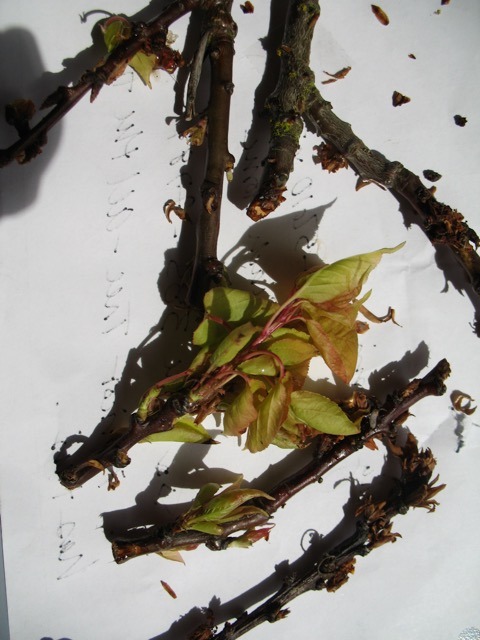Written by Sarah F.
From your sample the disease could be either of these two diseases below. Apricots are a difficult tree to grow well and set fruit with our cool maritime climate.
The sample you brought in has gumming , blackening on the branch ends , and evidence of some leaf spots developing. From this information ,I cannot tell you which if these two disease your tree has. In any case the solution is using a fungicide, pruning, maintaining good tree health and the treatment is almost identical for either disease. Please read the information below.
Remember that when using any pesticide: follow the label directions exactly and that the label is the law.
Here is some general information on apricots:
Outside of farming circles, the role of “winter chill hours” in fruit and nut production is little known. . In order to produce, many species of fruit and nut trees require a certain number of winter chill hours of dormancy in order to achieve high yields and quality in the spring; the required number varies by species and cultivar.
Chilling is achieved at temperatures that are approximately forty-five degrees or below, roughly between November 1 and February 15, with the most benefit being derived from chilling hours occurring in December and January.
Growing apricots presents a unique challenge to gardeners. Native to the colder, higher elevations of China, the apricot has a low winter chilling requirement. In its native area, and other cold climates, it is required to go dormant, survive a cold winter and quickly wake up in the spring to bloom and set fruit before the following autumn. In the Pacific Northwest and other areas with mild winters the tree wakes up by February and starts to bloom. Then, in all but the most frost protected areas, the blooms are zapped by frosts and the crop is lost. These trees are prone to fungus diseases as well.
Although fully hardy, apricots flower early and are vulnerable to frost, so therefore are best grown on a warm, sheltered, south-facing wall.
Apricots flourish on deep, moisture retentive, well-drained, ideally slightly alkaline soils and struggle in poor, shallow soils.
I wonder about the site: cold winds and temperatures in summer? salt spray? fog?
Thank you for your question and please do not hesitate with any other questions.
Sarah
WSU Master Gardener
Apricot_Bacterial_canker_Factsheets_4-22-2015
Apricot_Apricot_shothole_(Coryneum_blight)_Factsheets_4-22-2015




